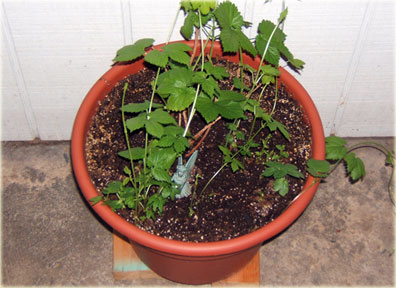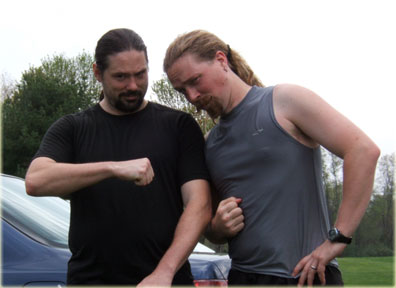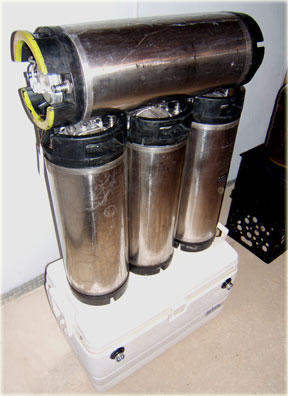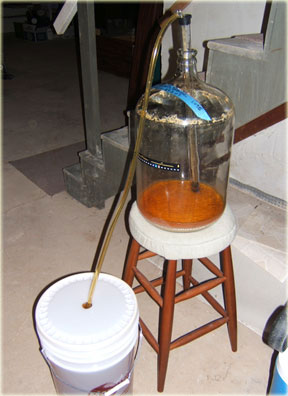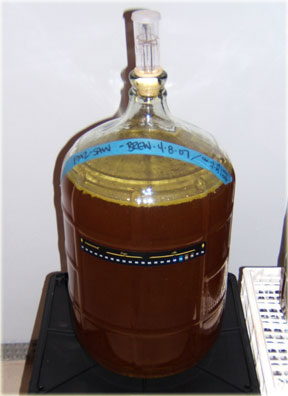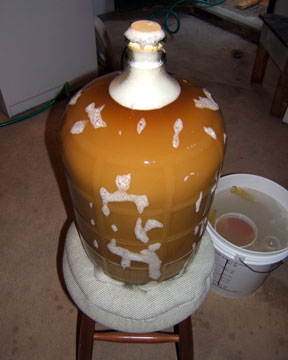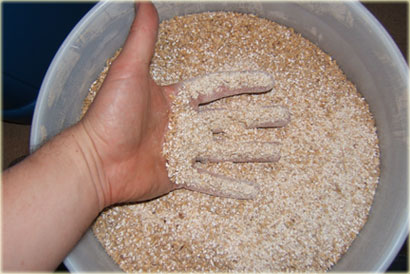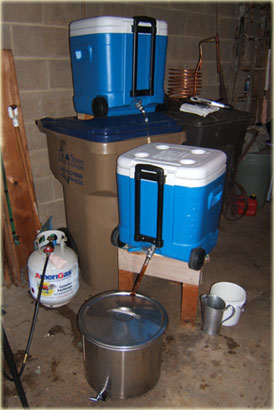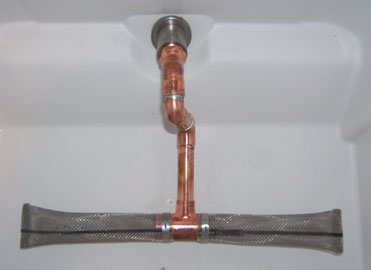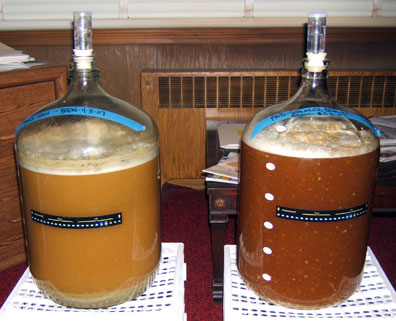I brewed again yesterday, this time a Belgian Witbier style beer. Of course, per usual, everything didn’t go as planned. Because of this stupid sinus infection that has beaten my ass everything has been a little askew this week. So before I brewed I had to clean bottles.

I put the bottles in to soak on Wednesday night, and I was planning on de-labeling, cleaning, and sanitizing them on Thursday night. These bottles would be for the PA3 or the Stainless Pale Ale. Well, Thursday became going to the doctor’s night so cleaning bottles didn’t happen then. Then Friday was the ass kicker of all ass kicker days with me sleeping almost 16 hours straight, falling asleep almost as soon as I got home from work. So, by the time Saturday rolled around I still had cleaning bottles looming over my head of things I needed to do, and since I didn’t have anything else lined up for the day but to brew I figured I’d do it first. Bottling actually went off without too many problems. I still hate the labels that Dogfish Head uses, there stupid paper tears way too easily and you kind of have to scrape the labels off.
After I was done with the bottle cleaning I kind of had to re-arrange the “brew area” to transformer from be used in a bottling way to a brewing way. After that was all done I decided to regroup and shower and eat before starting into the brew day, kind of give myself a clean slate. While I was getting ready, I realized I had not made a yeast starter the day or two before because for the same reasons as described above. I was a little ticked that I could let that slide, but I wasn’t pissed. I pulled out the yeast and let it come up to room temperature, I grabbed a jar of canned wort starter (thank you, Garrett), sanitized all that I needed too, and began to make my yeast starter. I threw my O2 stone into some boiling water and let it go to town for like 15 minutes, than gave the starter a good blast of O2. I was constantly aware of the starter trying to give it a shake whenever I could.
The brew day for the Wit was so-so. I was starting later than I wanted to, though that should come as no surprise, and wasn’t even because of the bottling cleaning. Originally I was going to use that same time to actually bottle that beer instead of clean the bottles for it, which still hasn’t happened. When I went to grind my grains I killed my drill. I was using a very old hand-me-down corded one-speed drill. I have used it twice now with the mill and it seemed to work fine. A little slow to get going but fine to keep going. Well, the grain mill killed it. It started smoking and stinking about a 10th of the way through the grains, into the garbage. So I pulled out the 12 volt battery powered drill to see how much help that would be. It actually was doing better than it had the first time I had tried it. It sucked though, I could listen to the mill slow as the battery died, and of course that was the battery fresh off the charger. So with about two pounds of grains left I grabbed a pair of vice-grips and went to town on the grain mill. Let me just tell you, anyone who chooses the handle option from Crank and Stein is a freakin’ moron! That was some stupid-dumb tedious stuff. With a grain bill that was only 50% malted barley I was sure that the mash was going to get stuck again, it was just a matter of how badly.
When it was time to start collecting the sweet wort from the mash tun I let things go as usual. For the first 20 minutes or so, everything seemed to look fine. But just as I was beginning to add the sparge water as the liquid level in the mash tun was almost at the top of the grain bed, the run-off stopped completely, no trickle, no nothing. So I added a couple gallons of 175 degree sparge water, mixed it up real well, and let it sit for about 10 minutes. After 10 minutes I did another recirc and started up again. It seemed that as long as I kept a pretty good liquid level on top of the grains the run-off seemed to go just fine. After that point it was a fairly easy brew day, only two hop additions and no fining agents made the additions less than usual. But, there were the spices to add. Traditionally a Wit has at least two spices, bitter orange peel and coriander, plus often a “secret” third spice to help make that beer distinctive from its neighbors. Karen brought my third ingredient, and when the time was right the blended mixture went into the brew pot.
Since I had not bottled the PA3 in the morning I was getting low on big carboys. Typically I like to do primary fermentation in 6 or 6.5 gallon carboy for 5 gallons of beer. Plenty of head-space or extra room if you should need it. Recently I had purchased a few 5 gallon carboys to use as secondaries, well it was time to put one of them to use as a primary today. I had not marked off the gallon marks on the carboy, so I was hoping it was actually larger than 5 gallons, but I had a feeling that it was exactly 5 gallons. Anyway, I went to transfer the beer and realized I was going to quickly run out of room. I probably left almost a gallon of wort behind in the kettle, ashame really. So the carboy was filled almost to bursting when I realized I still needed to add the yeast starter! Since the yeast starter was made so close to pitching time, there was no way I could pour off the liquid and just pitch the slurry. So, somehow I had to make another quart fit where there wasn’t room.

To to say that it leaked a little would be an understatement. Later that night before I went to bed (early again, damn infection!) I checked on the beer to see how it was doing, there appeared to be no activity, odd I thought but not unheard of – maybe I had just gotten used to Garrett’s Super WLP051 yeast he had given me to use on the last two batches. By the time the morning arrived and there was still no activity I was more concerned. I searched for the tube the yeast had come in and was surprised – More Beer sold me expired yeast, bastards! The best before date was written as ‘Maar-03-07’. Thinking back on it I remember seeing that, but knowing I received my order the last week of March I assumed that Maar was a misprint for May not March.
So, after all my hard work, time and money invested, plus being sick and on antibiotics and pain killers, after a long day off brewing – I get pooped on by having expired yeast. I quickly tried to call the closest homebrew store to see if they are open and see if they have the same yeast. Yes, they are open, but no they don’t have the same yeast. The guy was strongly trying to sell me a Hefeweizen yeast, and I kept on explaining to him I didn’t want that banana-clovey thing going on in this beer, idiots. So I looked through what few packs of dried yeast I had to see what I could do and decided on a Fermentis Safbrew T-58 pack to see if that can pull this beer out. I re-hydrated it and prepared to pitch the yeast. Oh no, there isn’t enough room in the carboy! So I had to unwillingly pour out some of the non-fermented wort to make room for the new re-hydrated yeast. I was ready to smash something now! I think I would have gained more pleasure from taking that full carboy out into the street and watching it shatter than I will from drinking the beer when it is ready.
Between being sick, not getting to do almost anything I’ve wanted to do over the last four days, and having this beer begin as a pile of poo I am absolutely miserable. It’s the freakin’ nicest day of the year so far and I’m inside on the computer bitching about yesterday – how pathetic.
